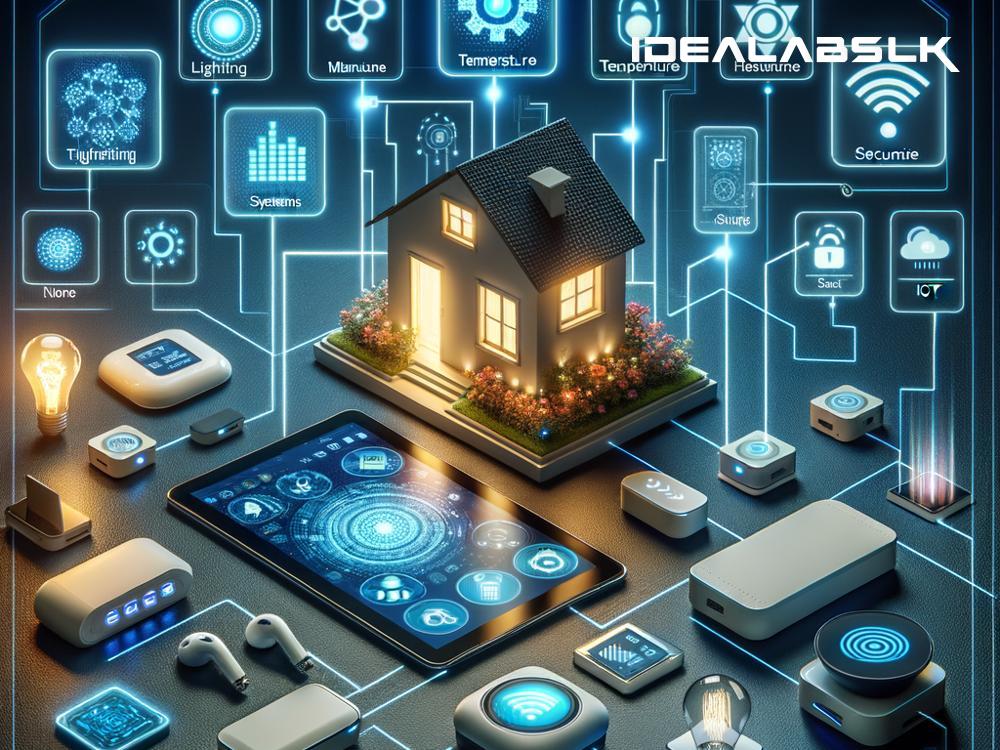Understanding How AI Fuels Advanced IoT Devices for Smarter Home Automation
In the ever-evolving world of technology, Artificial Intelligence (AI) and the Internet of Things (IoT) stand out as two revolutionary forces driving innovation. When these powerful entities come together, they pave the way for smarter, more efficient ways to manage everyday life, especially in the realm of home automation. But how exactly does AI work within advanced IoT devices to create the automated homes of the future? Let’s simplify this exciting intersection of tech.
The Basics of AI and IoT
First, let’s break down the basics. AI is all about creating intelligent machines that can think, learn, and make decisions similar to humans. Imagine a robot that can learn to tidy up your room just by watching you do it a few times. IoT, on the other hand, is about connecting physical devices to the internet, allowing them to communicate with each other. Think of your smartwatch sending your heartbeat data to your phone.
When AI meets IoT, you get smart devices that not only collect data but can also understand and make decisions based on that data. This combo is what powers the advanced home automation systems we see today.
How AI Works in IoT Devices for Home Automation
Imagine coming home on a sweltering day to find your house already cool and comfortable, or your coffee maker knowing just when to brew a fresh pot each morning. This isn’t magic; it’s AI at work in your IoT-connected home devices. Here’s a simplified breakdown of how it happens:
-
Data Collection: IoT devices are like the senses of your home, constantly collecting data. Sensors might track light, temperature, motion, or even the energy consumption of appliances.
-
Data Processing: This is where AI steps in. The AI within these devices analyzes the collected data to understand patterns and preferences. For example, it learns what temperature you prefer at different times of the day or when you’re likely to need certain lights on.
-
Making Decisions: Based on this analysis, AI can make decisions and take action without you needing to lift a finger. It can adjust your thermostat, turn lights on or off, or even alert you if it detects something out of the ordinary, like a potential security breach.
-
Learning and Adapting: The most exciting part of AI is its ability to learn and get smarter over time. As it continuously processes data from your habits and adjustments, it fine-tunes its decisions to better align with your preferences, making your home more comfortable and efficient without any extra effort from you.
Real-Life Applications of AI in IoT Devices for Home Automation
To bring this concept to life, here are a few examples of AI-powered IoT devices in home automation:
- Smart Thermostats: Devices like the Nest Learning Thermostat learn your schedule and temperature preferences to optimize heating and cooling, saving energy and money.
- Intelligent Security Cameras: Cameras equipped with AI can differentiate between familiar faces and strangers, alerting you only when there's an actual threat, thus reducing false alarms.
- Voice Assistants: Gadgets like Amazon Echo and Google Home learn from your routines and preferences to better assist with tasks, play your favorite music, or even suggest a new recipe for dinner.
The Future of AI and IoT in Home Automation
The possibilities are virtually endless as AI and IoT continue to evolve. Future homes might predict and prevent maintenance issues before they occur, use AI to optimize energy consumption dynamically, or offer personalized healthcare monitoring. The key to these advancements lies in the seamless integration of AI and IoT, creating a synergy that can further enhance our lives in ways we’re just beginning to imagine.
Simplifying the Complex
It’s easy to get lost in the technicalities, but at its core, the integration of AI and IoT in home automation is about creating homes that are more intuitive, efficient, and tailored to our individual needs. As technology progresses, the smart home of the future will not just be about automation, but about creating a living space that understands and anticipates our preferences, making our lives more comfortable and sustainable.
In conclusion, the fusion of AI and IoT is not just transforming the way our homes operate; it's reshaping our daily lives. By automating routine tasks and personalizing our home environment, this technology is setting a new standard for comfort and convenience, making the smart homes of the future a present-day reality.

